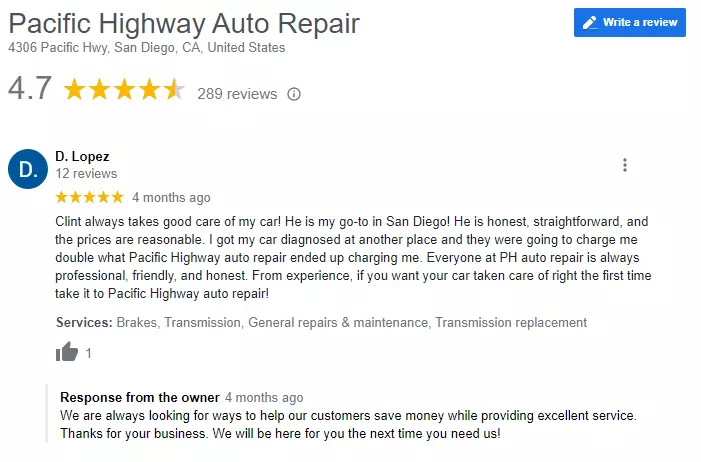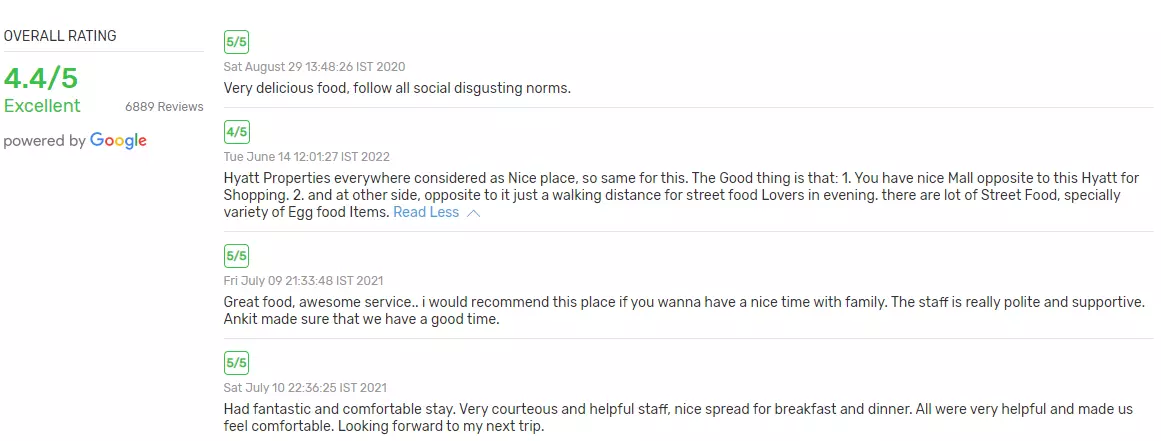According to recent surveys, people tend to search a lot more than before at every stage of the consumer lifecycle, right from researching products to evaluating reviews and, hopefully, making a purchase.
Now suppose your business receives a negative impression during the first research and discovery stage. In that case, you will be less likely to generate new leads and sales, demonstrating why the internet reputation is so crucial!
Online reputation management aims to create a positive public view of a brand or individual.
This blog will explore what online reputation management is, why brands should focus on it, and how they should approach it in the right way. Let's start!
What Is Online Reputation Management?
Online reputation management (ORM) is about being aware of and controlling users' public conversations about your brand online and managing your business profile on different digital channels.
This includes:
- Monitoring all the places on the internet where people might be talking about your business
- Ensuring information about your business is accurate and up-to-date
- Getting and responding to customer reviews and requests
- Finding ways to position your brand positively across websites
The main goal that businesses should have out of ORM is an overall positive sentiment not only from people who purchased from them but also for potential buyers, and generally, in the public eyes.
Why Does Your Online Brand Reputation Matter?
According to Forbes, brands with a negative article on the first page of search results can expect to lose 22% of revenue. With two negative results, this number increases to 44% and 59% with three. Now it might be easy to understand why online reputation management for business matters.
Here are some more benefits of online reputation management for brands:
People Rely On Reviews
93% of customers look at online reviews before making a purchase. If these users find information about your business that is negative, inaccurate, or misleading, it could influence their buying decision, and they may choose your competitors over you. Thus, reviews help to build a better online reputation for your brand.
Bonus Content: 3 Ways To Get Google Reviews Deleted [Always Work]
People Pay More For Brands With Good Online Reputations
Did you know people are willing to pay 22% more to a business if they have good reviews? A collection of positive reviews signals your customers that other people are likely to have a good experience with your brand, which removes the hesitations they may have when purchasing from a newer or lesser known brand.
Helps In Abolishing Negative Publicity
Negative and fake reviews can hurt your brand's online reputation. Your website's ranking might decline in search engines because of them.
ORM deals with converting bad reviews into positive ones and removing fake reviews. This way, your potential customers will be assured that you take negative reviews seriously and don't just ignore them.
Know how to outsmart fake negative reviews on Google My Business.
Improves Your Brand's Credibility
Taking care of your brand's online reputation shows that you care about your customers and are mindful of their needs. Consumers prefer attentive businesses that look into customer issues to those who make excuses.
Helps Build Brand Advocacy With Loyal Customers
Online reputation management goes beyond just reviews. You build a loyal following when you take care of customers and their concerns, and people become invested in the success of your business.
Your loyal customers, who know your brand's online reputation as a community partner and an industry leader, can become your brand advocates. They can step in at the time of crisis and give a positive point of view on your business.
ORM Channels Brands Should Focus
There are 6 main platforms or areas you can use to shape how people see your brand.
Shared Media
Ignored complaints, negative feedback, and low ratings on social media can really damage your brand’s image and push away potential customers. So, marketers need to keep an eye on social media just like they would listen to customer comments in a physical store.
Paid Media
With paid media, you control what the message says, what the content is, and who sees it. This type of online media is used to promote content to get more earned media and to bring traffic to your own media channels.
Owned Media
Owned media are digital channels that a person or company has full control over, such as websites, blogs, and social media accounts. Both paid and earned media helps boost your owned media.
Earned Media
Earned media is attention or exposure that a business gets through means other than paid advertising, such as mentions, shares, and reviews on other websites, social media platforms, and more.
Social Media
Social media platforms like Facebook, Twitter, Instagram, LinkedIn, and others provide a space for customers to interact with your brand and for you to engage directly with your audience. Positive interactions on social platforms enhance your reputation, while negative ones harm it.

Review Sites
Review sites like Yelp, TripAdvisor, Google My Business, and industry-specific review platforms are incredibly influential. Your customers often check such review sites before making purchasing decisions. Hence, actively managing your presence on these sites, responding to reviews, and asking satisfied customers to leave positive feedback are all important parts of ORM.

How Do You Know What Your Current Online Reputation Is?
Before you even start to improve your online reputation, you must first analyze your current online reputation. You can gauge your online presence by using the below checklist.
Search
Google your business industry and product name. Look at the first five listings and answer the below questions:
- Are you in the first five listings? If not, you have got to work on your search ranking.
- Are the reviews you see positive? Not everyone will be a happy customer. But you should ensure that your first impression on Google is as positive as possible.
- Is there an evidence of industry expertise or thought leadership from your brand?
- Check your Google My Business listings and see if you have responded to all the reviews, be they positive or negative. Are you addressing the concerns of the negative reviews?
- Is the information about your business accurate on different review sites?
Related: 7 Key Ways To Optimize Google My Business Listing For Business
Social
Check your brand's social channels and find the answers for these questions:
- How many followers do you have?
- When was the last time you posted?
- Does what you are posting represent and reflect your brand?
- Do you respond to comments and DMs?
- What's the average response time?
- Check what's being said on social media about your brand.
- Search your industry hashtags, location, and your brand name and see if people talking about your brand. If so, is it positive? If there are negative mentions, are your social fans coming to your defense?

Reviews
Observe different review sites:
- Check out your Google reviews. How many reviews do you have? How many stars do you have? Are you responding to reviews?
- Check out your Facebook reviews. Are people leaving reviews on your Facebook page? Are you responding to them?
- Check out other review sites such as Yelp and TrustPilot.
- Check other online reviews and recommendation websites.
- Check out Glassdoor. While it isn't a review site per se, many people searching for you online will check what your current and past employees say about your company culture.
- Check out comparison sites reviewing products in your industry. How do you rank against your competitors?

Know more about pro tips to get Google My Business page reviews.
How To Analyze Your Online Brand Reputation?
- Start your Brand Reputation Analysis by assessing your current online presence, such as customer reviews and social media feedback. Identify both positive and negative feedback and address any issues promptly to maintain a positive reputation.
- Define how you want your audience to perceive your brand to ensure consistency in tone and messaging across all platforms.
- Create a solid content marketing strategy by understanding your audience's interests, creating a content calendar, and measuring success through defined metrics.
- Be proactive on social media platforms, engage with your audience and influencers to build relationships, and collect customer insights.

- Regularly analyze customer feedback and interactions to understand their needs and improve their experience.
- Lastly, invest in online reputation management tools to monitor and respond to online conversations about your brand as quickly as possible. Be responsive to maintain a positive online reputation and build trust with your audience.

- If you are operating in multiple locations or are looking to expand into new markets, then Statusbrew's Location Reporting breaks down your data by country, state, or city to give you a clear picture of your audience's geographical distribution.
Online Reputation Management Strategies
Here's a 5-step process to create the perfect online reputation management strategy for your brand.
Step 1: Monitor The Current Status
Creating a strategy for your online reputation management will start with determining where you stand currently and how's your online reputation at present.
Step 2: Perform Competitive Analysis
A competitive analysis will help you determine how your competitors deal with ratings, reviews, and mentions across all channels. You can learn from your competitors' mistakes and take care not to repeat the same mistakes to improve your online reputation at the earliest.
Step 3: Create An Actionable Plan
Now that you know the kind of reviews and comments you receive, create a plan on how to handle each one of them and delegate tasks among your team. You can even plan for the crisis beforehand.
Step 4: Track And Manage The Reviews
Keeping reviews and ratings organized will help you manage them efficiently when you receive a lot of them. It also helps to keep up with the consistency in the brand voice and tone when replying to mentions and comments of a similar type. It's helpful to choose a single dashboard where you can see and respond to the reviews, messages, comments, and mentions received on different platforms.
Step 5: Measure The Results And Iterate
The last step would be to measure your efforts and see whether your efforts are leading to an increase in positive brand reputation. If not, you should be able to decide what you should be doing next to increase your brand reputation.
To know how to implement each strategy in detail, check out our blog on the 5-Step online reputation management strategy.
How To Control & Mitigate Reputation Risk?
Find and understand the risks
The first thing you need to do in managing risks is to spot them. Figure out what situations will hurt your brand's reputation. Think about how likely these risks are to happen and how much damage they can cause.
Learn about the people who matter
When managing risks, you need to know what the people who have a stake in your company expect from you, including both people inside and outside your organization, as their needs will be different. You can use surveys, polls, and interviews to understand their expectations better. Look at different reliable sources for a clear picture.
Check how your business is doing
To see if there's a gap between what stakeholders expect and how your brand is performing, you need to evaluate how well you are meeting their expectations honestly. Be honest and realistic so you can spot any weak spots or areas that can lead to a risk to your reputation.

Create a plan
Now that you know more about your business and the risks you can face, you need to come up with a plan for handling them if they happen. There are different ways to deal with risks, so use what you learned from assessing the risks to choose the best approach.
Set up safeguards
If there are steps you can take to lessen or even eliminate the risks, you should think about doing them. Use online tools, better policies and procedures, and good training to help reduce the risk to your reputation.
Watch your risks closely
Even after you have identified, assessed, and addressed risks, things do change. Stay informed by continuously monitoring what stakeholders expect and how your business is doing. This way, you can quickly react and adjust to any new developments.
Use technology
Using tools will make managing reputation risks easier. The right reputation management tools will give you a better view of your business and help you make smarter decisions. It will also keep you updated on new risks throughout the process.
To mitigate social media crises before they escalate, Statusbrew’s advanced automation feature helps you identify and hide negative comments from your comments section. You can identify common issues raised by your customers by analyzing the hidden comments.
9 Online Brand Reputation Protection Tips
1. Own The Channels Your Target Audience Uses
Building your brand reputation on a platform where your audience is not present is of no use. At the same time, it hurts your brand reputation if you have a not-so-good reputation on a platform where your target audience is most likely to search for your products or services.
Answer the following questions:
- How big is your social media presence?
- Are your competitors using channels that you are ignoring?
- Is your audience using a channel where you have no presence?
2. Complete A Regular Social Media Audit
Update things that need improvement and trash anything that's underperforming. Audit your social media and exploit each social channel to the fullest.
3. Consider Your Brand Voice
Online reputation management demands authenticity. And a brand voice is one aspect where authenticity is displayed to the maximum extent.
To improve your social media strategy, check your brand voice. What does your brand say? How does it say what it says? The language it uses. The tone.
4. Respond And Acknowledge
Respond to every review received. Even if it's a positive response, acknowledge them and thank them for dropping a review. Address the concern of negative reviews and see how to change their sentiment.
Engage with your audience on social media as much as possible. You should show your audience that you are listening to them.
Respond to every comment, mention, and message. It's all about making your audience feel part of your community.

5. React Immediately
Speed is of the essence, right?
The sooner you find a review, the sooner you can deal with any negativity. Negative reviews and comments can spread faster than a virus, and be devastating to your brand, so you need to act upon them immediately.
6. Create Content That Engages And Adds Value
Creating engaging content on social media and your website will improve your online reputation.
Search engines love unique and value-driven content and rank it highly in SERPs as well. Also, you should focus on promoting your message and encouraging user engagement.
Show us your best interpretation of this nostalgic background and we may just make it our Twitter header. ? pic.twitter.com/gLsqu5sGdD
— Windows (@Windows) September 21, 2022
7. Outreach Your Content To External Sources
Consumers are immune to brand-speak. They aren't listening anymore. Marketing messages leave them cold. They have stopped believing and trusting when a brand praises itself.
So, it's time to get others to say what they think of your products. Engage external sources and encourage them to share your content on their website.
8. Listen To Criticism
Look at who the main detractors are. Resolve their issues. If there's a question about your brand online, you should be there to answer it at the right time. Consumers today are looking for brands who not just listen but also respond to them proactively. So don't delete or ignore your critics; instead, respond to them.
9. Collaborate With Influencers To Increase Positive Sentiment
To create more positive conversations about your brand online, look at those who make a career out of being online, i.e., influencers.
Collaborate with social media marketing influencers for brand endorsement and to boost brand awareness. Ask them to review your product and write original content their followers will love and share.
Know more about 12 smart ways to ask for a review.
Online Reputation Management Tools
These online reputation management tools will help you easily track and manage the conversations around your brand on different platforms:
1. Statusbrew
Statusbrew is an easy-to-use reputation management tool where you can manage reviews on Google My Business, Google Play Store, App Store, Trip Advisor, TrustRadius, Yelp, and more from a single dashboard. You can even manage communications on social and messaging channels like Facebook, Instagram, YouTube, LinkedIn, Twitter, Whatsapp, Line, etc.

Here are the review management features offered by Statusbrew:
- Get back to irate customers quickly by getting notified of all negative reviews.
- Understand audience emotions at a scale using AI-powered sentiment analysis.
- Auto-assign reviews for a specific location to store or area managers.
- Automatically route reviews to a particular inbox/team member based on their specialty.
- Collaborate with team members in real-time to handle customer queries.
- Mitigate compliance issues using controlled team member access and no password sharing.
- Manage reviews and customer queries at a large scale.
- Auto-hide spam and trolls across your social real estate.
- Keep track of customer journeys across platforms using inbuilt CRM.
- Identify new customers with listening solutions.
- Get in-depth brand reputation insights.
2. Podium
Podium is a customer interaction platform that utilizes text messaging to build an online reputation and help businesses manage customer relationships. It merges online reviews and customer interactions in a single dashboard, ensuring easy review monitoring, media monitoring, and management. From the same dashboard, you can respond to online reviews in real time, send review invitations, and send and receive text messages with new and current customers.
3. Birdeye
Birdeye is the most reliable platform for enterprises for customer service and reputation management. Using Birdeye, businesses can interact with prospects online, learn from their customers' experiences, manage their online reputation, increase sales, and do more.
4. Erase.com
Erase combines legal expertise with advanced SEO strategies to remove or suppress negative content and repair online reputations. When removal isn’t possible, Erase promotes and publishes positive content to push down harmful results and restore credibility.
Online Reputation Management Cost
It's impossible to provide a fixed cost for online reputation management services. Several factors influence online reputation management costs, including:
- Which (and how many) ORM services are included in your package
- The size of your business and industry
- The scope of work required
- Your current online reputation and domain authority
- The number of negative reviews your brand has currently
- Whether you need negative content to be handled
- Your competitor's reputation and domain authority
Here's a table summarizing the starting cost of the top 7 online reputation management software:
| ORM Tool | ORM Tool Starting Cost |
|---|---|
| Statusbrew | $129 (per month) |
| Podium | $249 (per month) |
| Birdeye | $299 (per month) |
| Yext | $4 (per week) |
| Grade.us | $25 (per month) |
| NiceJob | $75 (per month) |
| Trustpilot | $225 (per month) |
Online Reputation Management For Different Industries
Online Reputation Management For Hotels
An excellent online reputation of your hotel aids in optimizing your visibility on various booking channels and bettering your position in search results.
Flourishing online reputation management for hotels results in more exposure as travelers commonly tend to book a property that ranks in the top search results! If your property happens to be on this list, it will work wonders for your hotel in several aspects - getting more bookings, crushing your review score, driving sales, getting more positive reviews, and so on.

Know more about how to deal with negative restaurant reviews/comments on social media.
Healthcare Online Reputation Management
Healthcare reputation management is essential for doctors, medical practitioners, and hospitals alike. Healthcare reputation management takes control of your online image and brand to attract more patients. A strong online image and presence are essential as more patients search for their providers online, instilling confidence in the doctors' abilities.
Online Reputation Management For Law Firms
Thanks to the internet, people can research lawyers online before connecting with one, as 33% of people seeking legal advice start their journey online!
When an attorney loses a case, their clients might not leave a chance to defame the lawyer. Such customers can use the internet to offend the lawyers, which can change a lawyer's practice life and status. A negative reputation and review can prove to be devastating for the lawyer's career. Hence, a law firm must keep a check on its online reputation and maintain it regularly.
Wrapping Up!
Your business is widely open to criticism and complaints in this digital era. That's why your brand should be protected with the right online reputation management strategy and use the correct ORM tool. By regularly checking your online reputation, you will understand how consumers feel about your brand and even attract new customers.
Need help tracking your online reviews on Google My Business, Google Play Store, App Store, Trip Advisor, TrustRadius, Yelp, and more? Sign up for a free demo with Statusbrew today to learn how we can help! ?
Statusbrew is an all-in-one social media management tool that supports Facebook, Instagram, Twitter, Linkedin, YouTube, and even Google My Business.
FAQs (Frequently Asked Questions)
Here are some commonly asked questions on online reputation management:
How do I protect my social media reputation?
You can protect your social media reputation by maintaining an active social presence, responding to and engaging with your social following, and becoming an authority within your industry.
How do you prevent reputation damage?
To prevent reputation damage, you should make reputational risk part of your ORM strategy, focus on a positive image and communication, create a response and contingency plans and protect your brand against data breaches.
What are the various types of online reputation risk?
Some types of online reputation risks are negative reviews left by customers on public review sites, especially if based on false experiences, negative articles and press, and negative social media posts from consumers about their experience with your business.




Explore the Statusbrew range of social media tools
Cancel anytime!